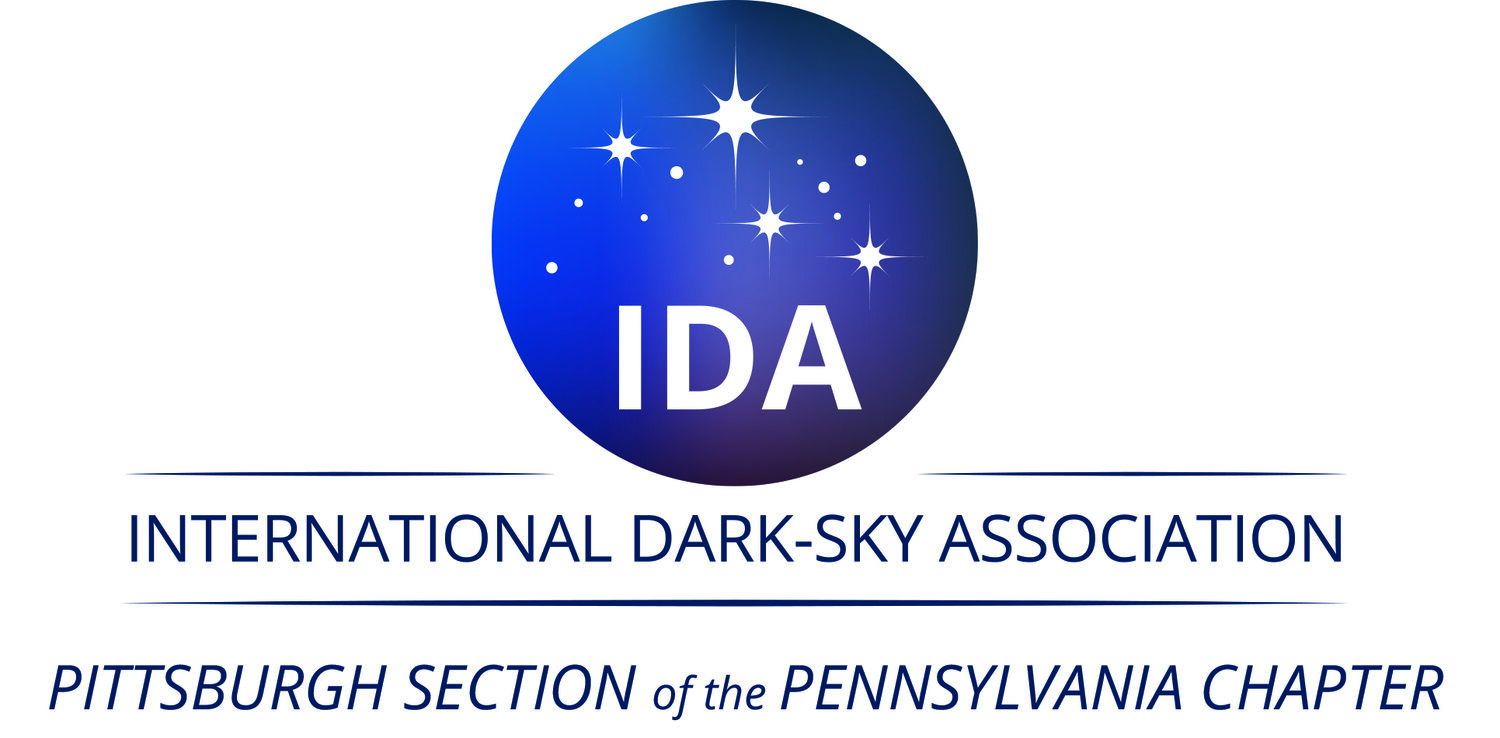Bright Skies in the Dark of Night
This is a zine by Casey Rodriguez, made to educate people about light pollution, how to measure it, and it’s effects on the surrounding areas.
A composite image by Jerry Zhu. Available at: https://www.cs.cmu.edu/~zhuxj/astro/html/pghdarksky.html shows the land in the area around Pittsburgh, PA. Overlaid is a map of light pollution, a measure of how bright a particular section of the night sky is. Note how the dark the sky gets one hour out from city is only as dark as Bortles 4.
Most of the nearby observatories in the the Bortle 5 skies.
Bortle Scale
Created in 2001 by John E. Bortle, this nine-level numeric scale quantifies the observability of objects in the night sky. The scale ranges from Class 1, the darkest available skies on Earth, through Class 9, the brightest of inner-city skies.
With the use of the Bortle Scale, amateur astronomers can evaluate the darkness of their immediate location and compare it to other sites. Location brightness is a function of light pollution. The more light emitters that illuminate the sky, the worse the pollution is said to be. Areas of high light pollution include city centers, factories, billboards and prisons.
Pictured are three images of skylines at different Bortle levels, courtesy of Tony Flanders and his work with sky & Telescope.
The left image is approximately a Bortle 4 sky, with the middle and right images being Bortle 6 and Bortle 9, respectively.
The largest factor in light pollution is skyglow. This nighttime glow is primarily caused by inappropriate artificial light at night. Upward-directed or incompletely shielded sources beam light high into the sky where it is partially scattered back down to the ground (the same reason our sky is blue!). Even well-shielded sources light up their nearby space, light reflecting off surfaces. Illuminated “domes” of light can be seen over bright cities, with skyscrapers, streetlights and signage shining through the night.
Why care about light pollution?
“More light at night helps us see and keeps us safe” is a phrase uttered often by those ignorant to the problem. As it turns out, this is rather far from the truth. Not only have studies failed to find that prevent accidents or crimes, several studies found the opposite! It might sound intuitive that crime rates would drop if everything was lit up, but criminals need to see what they’re doing too.
A secondary form of light pollution, glare, decreases safety, obscuring the vision of drivers and passerby’s. Think back to a time when an oncoming car blinded you with poorly-aimed lights. You know the ones.
The best way to reduce light pollution is to follow the first step to recycling: reduce. It sounds insignificant and childish, but turning off your lights, using warmer bulbs, and only lighting up the areas you are actively using are the best ways to reduce your personal footprint. Groups such as the International Dark Sky Association and Saving Our Stars provide great resources for getting your voice heard!
I can’t pretend to make you immediately care about light pollution. I could list scary facts like how too much exposure to bright, blue light at night can lead to breast and prostate cancer. Maybe I could show you pictures of a distant galaxy and how it can only be seen in the most remote of locations. Exactly what it takes to get you to be concerned could be anything.
Instead, I want to take the time one day and travel out of the city to a dark sky location and take in the stars. Set down your phone (it would have a hard time capturing the stars anyways) and gaze up. Take it in. When you get back to where you live, look up again. See what you no longer see, the light of the city robbing you of the stars.
Start out small. Next time you have to replace a bulb, opt for a warmer color bulb, something below 3000k. Adjust your yard lights so they point down. Close your curtains. Take the first step. The next one gets easier. I promise.
This zine was made by Casey Rodriguez.
Contact me at: itscaeyr@gmail.com if you have questions, complaints, comments, whatever.
This zine was made for educational purposes only.





